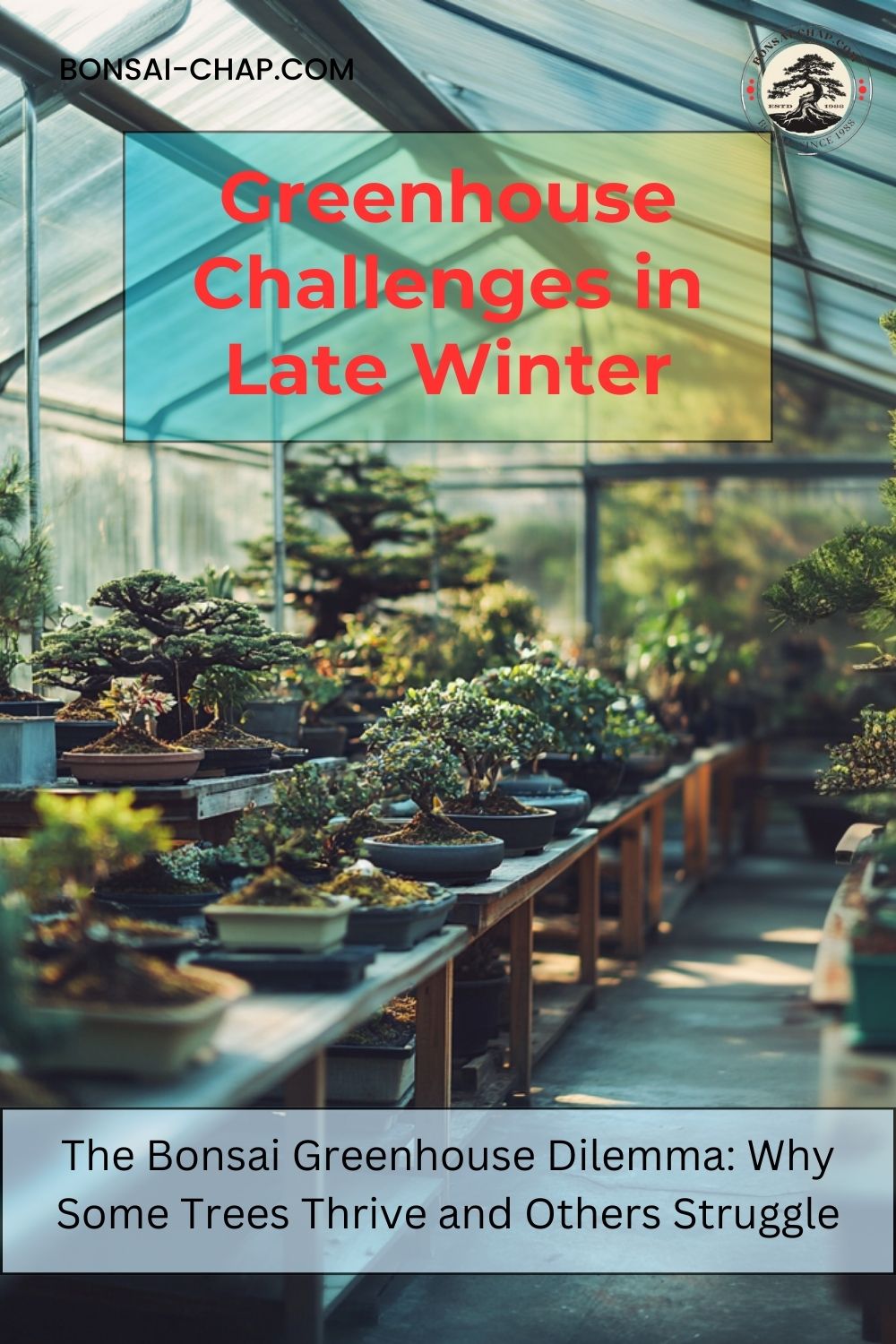
Bonsai Greenhouse in late winter: Preventing Disease and Managing Temperature
Share
Protecting Bonsai at the End of Winter
Winter is ending, but your bonsai still faces risks. Greenhouses help, but they also create problems. Excess humidity, sudden temperature swings, and poor ventilation can weaken your trees.
The key is balance. Too much warmth can trigger early growth, making trees vulnerable. Too much moisture can invite disease. Without proper care, your bonsai may struggle to adjust to spring.
Controlling Temperature Fluctuations
Late winter brings unpredictable weather. Daytime temperatures may rise, but nights can still be cold. These swings stress your bonsai, especially if buds have started to form.
-
Monitor daily temperature changes. A thermometer helps track greenhouse conditions.
-
Prevent overheating. Keep vents partially open on warm days to avoid a sudden rise in temperature.
-
Avoid temperature shock. If a warm spell arrives, resist the urge to move trees outside too soon. Exposing them to fluctuating outdoor conditions can damage tender growth.
-
Regulate warmth. If your greenhouse gets too warm, consider opening doors or adding controlled ventilation rather than relying on direct sun.
-
Retain stable conditions at night. A cold frame inside the greenhouse can shield delicate trees from temperature drops.
Preventing Mold and Fungal Diseases
Fungal infections spread quickly in damp conditions. Greenhouses trap moisture, creating the perfect environment for mold, botrytis, and mildew.
-
Improve airflow. Stagnant air encourages disease. Use fans or natural ventilation to keep air moving.
-
Control humidity levels. High humidity fosters fungal growth. Water early in the day so moisture can evaporate before nightfall.
-
Check for condensation. If your greenhouse has excessive moisture on surfaces, air circulation needs improvement.
-
Space out trees. Crowding bonsai increases humidity and restricts airflow, making it easier for diseases to spread.
-
Inspect regularly. Look for early signs of mold or rot on trunks, branches, and soil.
-
Remove affected parts. If you see mold, trim infected areas immediately. Disinfect tools between cuts to prevent further spread.
-
Use preventive treatments. Organic solutions like neem oil or a mild copper fungicide can help control mold before it becomes a problem.
When to Move Bonsai Outside
Transitioning bonsai out of a greenhouse too soon can cause stress. Trees need time to adjust to outdoor conditions.
-
Introduce them slowly. Place trees outside for a few hours on mild days, then bring them back in.
-
Watch for late frosts. Even hardy species can suffer if temperatures drop suddenly.
-
Avoid rapid changes. If trees go from a warm greenhouse to a cold night, buds may die back.
-
Know your species. Some trees handle early exposure better than others. Tropical species should stay inside longer, while hardy ones can tolerate earlier transitions.
Keeping Your Greenhouse Safe
A well-maintained greenhouse reduces stress on your bonsai.
-
Keep vents clean. Blocked vents limit airflow, increasing humidity.
-
Check for pests. Aphids, spider mites, and other insects thrive in warm greenhouses. Treat infestations early.
-
Avoid overwatering. Trees need less water when temperatures are still low. Let the soil dry slightly between watering sessions.
-
Sweep and sanitize. Leaves, fallen needles, and debris hold moisture and breed fungus. Keep surfaces clear.
Late winter is a critical time for bonsai. Stay ahead of disease, regulate temperature, and move your trees with care. With the right approach, your bonsai will emerge from winter strong and ready for spring.